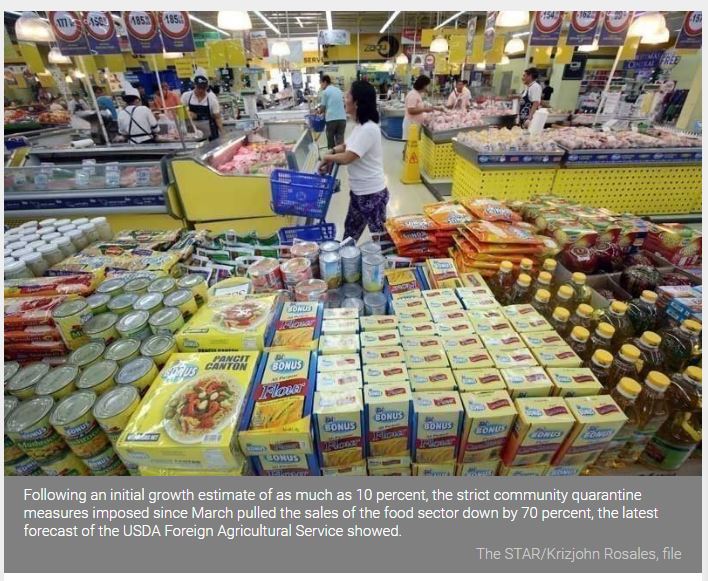Philippines: Food sector sales may drop 54% to $7 billion
MANILA, Philippines — The local food service sector is seen to post a 54 percent decline in sales to $6.9 billion this year due to the coronavirus disease pandemic, according to the United States Department of Agriculture (USDA).
Following an initial growth estimate of as much as 10 percent, the strict community quarantine measures imposed since March pulled the sales of the food sector down by 70 percent, the latest forecast of the USDA Foreign Agricultural Service showed.
“Food establishments that have attempted to reopen have been forced to adapt to changes in regulatory requirements and consumer preferences while importers have been forced to create new sales channels to offset lost sales,” the USDA said.
The USDA said importers faced high inventory levels due to food service establishments suspending or limiting operations to take-out, delivery and drive-thru services.
In turn, businesses began to increasingly leverage the country’s leading worldwide usage of social media and gave rise to a new food service distribution channel through online buying and selling.
Analysts estimate it will take at least six months for the Philippine dine-in scene to bounce back once the COVID-19 outbreak taper off.
“In the meantime, the establishments that have remained in business are enrol-ling in food delivery platforms, adapting to other consumer preferences, including curbside pick-up and cashless payment platforms while also continuing to explore niche markets and trends, including higher demand for plant-based food,” the USDA said.
Meanwhile, despite the slowdown in global trade due to the COVID-19 outbreak, US exports of high-value food and beverage products to the Philippines increased by six percent in July. These comprised mostly dairy, and meat and poultry products.
China gained by a large margin of 21 percent mainly fresh fruits such as apples, citruses, grapes, and pears, garlic, and sauces and condiments, and Australia by 17 percent mostly beef, cheeses and table grapes.
While domestically produced items account for about 70 percent of the total food supply with the balance being imported, traders remain optimistic that sales of imported food and beverage products would continue to grow as consumers are always on the lookout for variety, particularly US products, which consumers perceive as superior in quality.
The US is the largest supplier for consumer-oriented food products at 19 percent market share, followed by Indonesia, China, New Zealand, Thailand, Singapore and Australia.
Source: https://www.philstar.com/business/2020/09/30/2046020/food-sector-sales-may-drop-54-7-billion


 Thailand
Thailand




